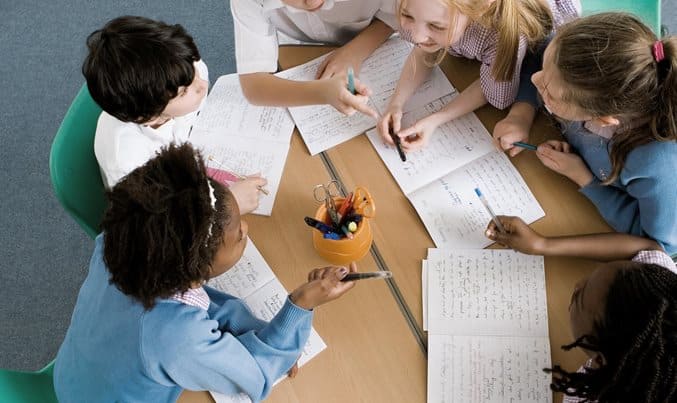
Practicals are an indispensable part of education and hold a special place in the heart of every student. They offer a unique opportunity for learners to put their theoretical knowledge into practice and engage in experiential learning. Practical work allows students to learn through observation, experimentation, and discovery, which is a departure from the traditional methods of learning, such as lectures and memorization.
One of the key benefits of practicals is that they provide students with hands-on experience, which is essential for developing practical skills. Practical work exposes students to real-life situations that they will encounter in their future careers. For instance, a student who takes a course in computer programming can practice coding exercises that simulate real-world scenarios, such as developing applications or websites. This not only strengthens the student’s technical skills but also enhances their problem-solving abilities.
Furthermore, practicals promote creativity and innovation, which are vital in many fields. They encourage students to think outside the box, explore new ideas, and develop novel solutions to problems. For example, students in a product design class may be given a design challenge and be required to develop a prototype using various materials. This fosters creativity and helps students to build their design thinking skills.
Practicals in education refer to hands-on activities that allow students to apply the theoretical concepts they have learned in class. These activities can take many forms, including experiments, projects, and simulations. Practical work is often associated with STEM subjects, such as physics, chemistry, biology, and computer science, but it can be used in other subjects such as art and design, business studies, and even language learning.
Practical education vs theoretical education
Practical work provides students with an opportunity to engage in experiential learning, which is a departure from the traditional methods of learning such as lectures and memorization. Experiential learning involves observation, experimentation, and discovery. Through practical work, students can observe and experiment with real-life situations, and develop problem-solving and critical thinking skills.
Practical work also promotes creativity and innovation. It encourages students to think outside the box, explore new ideas, and develop novel solutions to problems. For example, a student in a product design class may be given a design challenge and be required to develop a prototype using various materials. This fosters creativity and helps students to build their design thinking skills.
Moreover, practicals provide an opportunity for teachers to assess student learning and adjust their teaching methods accordingly. Teachers can observe students as they engage in practical work and identify areas where they need additional support. This feedback loop enables teachers to provide personalized instruction and cater to the individual needs of each student.
Overall, practical are an indispensable part of education that provide students with hands-on experience, promote creativity and innovation, reinforce learning, and help students develop practical skills. Practical work allows students to engage in experiential learning, apply concepts they have learned in class, and develop problem-solving and critical thinking skills. It also provides teachers with valuable feedback on student learning and enables them to personalize their instruction.
Practicals also help students to apply the concepts they have learned in class, which reinforces their understanding of the subject matter. Theoretical concepts can sometimes be difficult to grasp, but practical work allows students to see how they work in the real world. This helps to make the material more relevant and interesting, which can increase the student’s engagement and motivation.
Moreover, practicals provide an opportunity for teachers to assess student learning and adjust their teaching methods accordingly. Teachers can observe students as they engage in practical work and identify areas where they need additional support. This feedback loop enables teachers to provide personalized instruction and cater to the individual needs of each student.
However, there are challenges that come with practicals, such as the cost of materials, the need for specialized equipment, and time constraints. Despite these challenges, practicals are an investment in the future of our students and our society as a whole. They are essential for developing practical skills, promoting creativity, and reinforcing learning. By incorporating practicals into the curriculum, we can prepare students for success in their future careers and equip them with the skills they need to make a positive impact in the world.
FAQ’s
Practicals in education refer to hands-on activities or experiments that allow students to apply the theoretical concepts they have learned in class. These activities provide students with an opportunity to engage in experiential learning, observe, experiment, and discover.
Practicals have several benefits in education, including developing practical skills, promoting creativity and innovation, reinforcing learning, and providing teachers with valuable feedback on student progress.
Practicals can be costly to implement, depending on the subject and the equipment required. However, practicals do not have to be expensive, and teachers can often find low-cost alternatives or use easily accessible materials.
Yes, practicals are relevant outside of the classroom as they develop practical skills that are essential in many careers. For example, a student who develops programming skills through practical work can use these skills in a career in software development.
Conclusion
In conclusion, practicals are a vital component of education that provide students with hands-on experience, promote creativity and innovation, reinforce learning, and help students develop practical skills. Although practical work can be challenging due to the cost of materials and time constraints, its benefits outweigh its challenges. Practical work allows students to engage in experiential learning, apply concepts they have learned in class, and develop problem-solving and critical thinking skills. It also provides teachers with valuable feedback on student learning and enables them to personalize their instruction. Ultimately, practicals are an investment in the future of our students and our society, as they prepare students for success in their future careers and equip them with the skills they need to make a positive impact in the world.